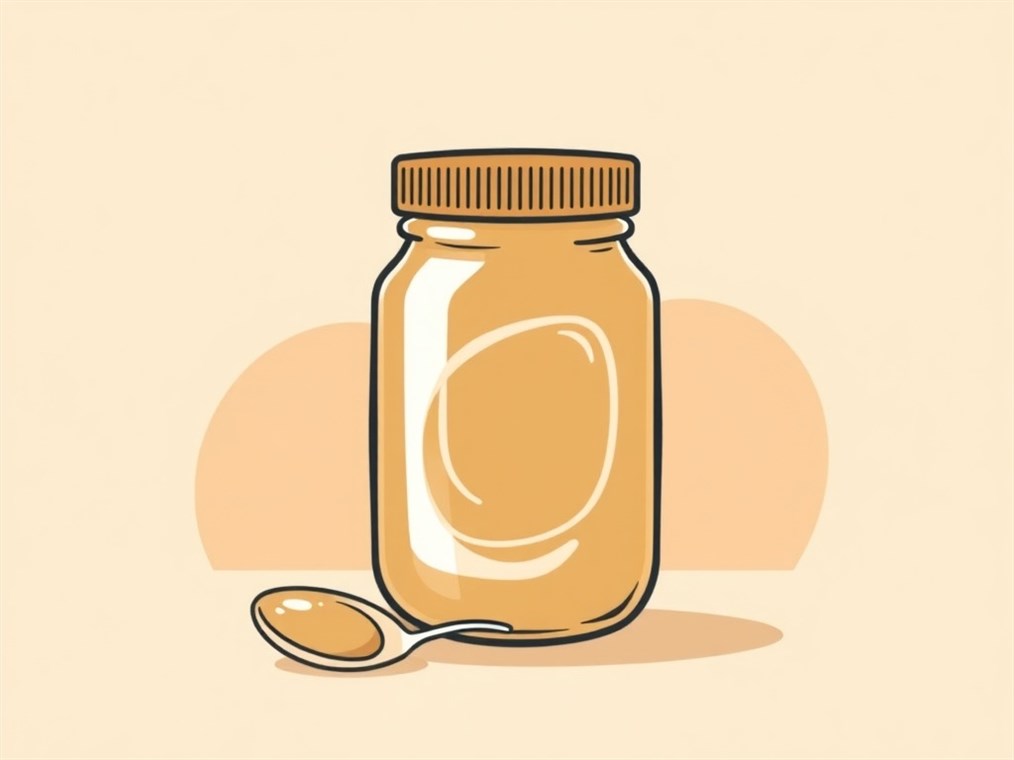How Long Does Peanut Butter Really Last? Let’s Get Real.
Peanut butter. That creamy, dreamy spread we all know and love. From PB&Js to late-night spoonfuls straight from the jar, it’s a pantry staple. But have you ever stopped to wonder just how long that jar of goodness actually lasts once you’ve popped the seal? It’s a valid question! The answer, like most things in life, isn’t quite as straightforward as you might think. It really depends on what kind of peanut butter you’re dealing with, and how you’re treating it.
The Great Peanut Butter Divide: Commercial vs. Natural
Okay, so first things first: not all peanut butter is created equal. You’ve got your classic, commercially processed peanut butter – the kind that probably graced your childhood sandwiches. These guys are packed with stabilizers and preservatives, those sneaky ingredients that help keep things… well, stable. Think hydrogenated oils or palm oil, and sometimes even sodium benzoate. These additives are the reason that jar can hang out in your pantry for quite a while.
On the flip side, you’ve got natural peanut butter. The purist’s choice. This stuff is usually just peanuts and maybe a pinch of salt. That’s it! No funny business. And while that’s awesome from a “clean eating” perspective, it also means it’s a bit more… delicate.
- Commercial Peanut Butter: You can usually get away with leaving an opened jar in the pantry for 2-3 months. Pretty forgiving, right? But if you want to stretch its lifespan, pop it in the fridge, and it could last 6-9 months.
- Natural Peanut Butter: This is where things get a little trickier. Since it lacks those preservatives, natural peanut butter is more prone to spoiling. In the pantry, you’re looking at about a month, maybe less if you live in a warmer climate. Honestly, I wouldn’t push it past three weeks. The fridge is your friend here. Stashing it in the refrigerator can buy you 3-4 months, or even up to 6 months according to some sources. I’ve personally found that it’s best used within 2 months for optimal freshness.
What’s Messing With My Peanut Butter’s Shelf Life?
So, what else affects how long your peanut butter stays fresh? A few things, actually:
- The Ingredient List: We already touched on this, but it’s worth repeating. Those stabilizers in commercial brands are shelf-life superheroes. Natural peanut butter? Not so much.
- Storage, Storage, Storage: Think cool, dark, and dry. Heat and humidity are peanut butter’s enemies. They’ll speed up the spoiling process faster than you can say “peanut butter cup.”
- The Double-Dip Debacle: We’ve all been there. You’re making a sandwich, and you absentmindedly use the same knife for the jelly and then back into the peanut butter. Resist the urge! Introducing bacteria into the jar is a surefire way to shorten its lifespan.
Is My Peanut Butter Bad? Signs to Watch For
Okay, so your peanut butter is within the “safe” timeframe, but something seems… off. How do you know if it’s time to toss it? Here’s what to look for:
- The Sniff Test: Rancid peanut butter has a distinct smell. It’s not that pleasant, nutty aroma you’re used to. Think bitter, metallic, or even a little soapy.
- The Taste Test (Use Caution!): If it smells weird, taste a tiny bit. A sour, bitter, or metallic taste is a major red flag.
- The Visual Inspection: Keep an eye out for changes in color (darkening is a bad sign), texture (dryness or hardness), or – yikes – mold. Now, oil separation is totally normal for natural peanut butter. Don’t freak out! Just stir it up. But if you see excessive oil separation in processed peanut butter, that’s a sign it’s past its prime.
Pro Tips for Peanut Butter Longevity
Want to keep your peanut butter fresher for longer? Here are a few tricks I’ve learned over the years:
- Refrigerate, Especially Natural: Seriously, if you’re using natural peanut butter, refrigeration is non-negotiable. It’s the easiest way to slow down spoilage.
- Seal It Up: Make sure that lid is on tight after every use. You want to keep moisture and contaminants out.
- Clean Utensils Only!: I can’t stress this enough. No double-dipping!
- Stir It Up (Natural Only): For natural peanut butter, give it a good stir before each use to reincorporate those oils. Some people even store the jar upside down to make stirring easier. Clever, right?
- Keep It Out of the Sun: Find a cool, dry place for your peanut butter, away from heat and direct sunlight.
What About Powdered Peanut Butter?
Oh, and a quick word about powdered peanut butter. This stuff is a bit different. Because it has less fat, it’s less likely to go rancid. An unopened container can last up to a year if stored properly. It’s harder to tell when powdered peanut butter has gone bad, but trust your senses. If it smells or tastes off, toss it.
The Bottom Line
Peanut butter is a fantastic food with a pretty decent shelf life. But a little bit of knowledge and proper storage can go a long way in keeping it fresh and delicious. So, go forth and enjoy your peanut butter, armed with the information you need to make the most of every jar!

